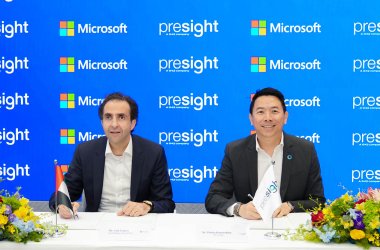 Oracle customers this week expressed concern about the effort and cost of upgrading IT infrastructures after the software maker said it would stop development for Intel’s Itanium chip architecture.
Oracle customers this week expressed concern about the effort and cost of upgrading IT infrastructures after the software maker said it would stop development for Intel’s Itanium chip architecture.
In a terse statement issued on the weekend, Oracle said it would discontinue software development for Itanium, reasoning that Intel’s strategic focus was on the x86 architecture, and that Itanium was nearing the end of its life.
The decision has forced Oracle customers using Itanium servers to rethink long-term IT upgrade plans, as Oracle’s decision limits future hardware and software options.
Some customers are considering buying new hardware or porting code around a new chip architecture, which could cost millions of dollars. However, Oracle’s continuing support of existing software on Itanium servers could protect investments and mitigate short-term issues.
Intel’s Itanium chips are primarily available on Hewlett-Packard’s Integrity servers, which are designed to be mission-critical systems, built for high uptime. In reaction to Oracle’s decision, Intel this week reiterated its commitment to Itanium, while HP said that Oracle’s “anti-customer actions” were designed to force customers into buying Sun servers.
Oracle has provided an end-of-life list for software on Itanium servers. The last version of the Oracle database to support Itanium will be 11gR2. The upcoming version 12g will not work on Itanium.
HD Supply, a wholesale distribution company in San Diego, runs the Oracle database on Integrity servers with HP’s proprietary HP-UX OS. But after Oracle’s decision, the future of deploying more Integrity servers is “looking bleak,” said Mel Burslan, a senior systems engineer for HD Supply.
The company is slowly moving away from HP-UX to Linux, but if it also decided to move away from Integrity servers, it could cost millions, Burslan said. The company’s hardware infrastructure also includes servers based on HP’s now-defunct PA-RISC chips, primarily to run legacy applications.
“Knowing the budget of my department … it would be in (the) several millions of dollars level just for the hardware costs and then a hefty sum for the consulting and additional manpower requirements,” Burslan said.
For Veolia Environment Service, North America, Oracle’s announcement could end up accelerating migration efforts. The company was already evaluating options to move from Itanium to a new chip architecture, said Todd Sheetz, manager of database administration and enterprise architecture. Veolia runs Oracle’s PeopleSoft ERP system on Integrity servers with HP-UX, and database software on x86 servers running Linux.
“The only real option is to migrate to a different chip technology and therefore operating system. Since we are running Linux for the database, that will more than likely be the direction for the application stack as well,” Sheetz said.
The company is leaning toward moving the PeopleSoft software stack to Linux on x86 systems. Cost is one reason.
“Support and maintenance for Itanium servers and HP-UX are much higher than X86 and Linux-based systems,” Sheetz said.
The current version of PeopleSoft, version 9.1, works on Itanium. The next version, 9.2, expected to arrive next year, will not work on Itanium servers.
Oracle’s plans to continue supporting applications on Itanium could allay fears of switching hardware overnight. Sheetz, however, had concerns about Oracle’s commitment to issuing patches and bug fixes.
Veolia wants to break away from proprietary Unix systems to industry-standard systems, which are becoming cheaper and faster. An eventual switch to x86 could help Veolia save money in the long run, said Sheetz, who is also on the board of directors for the Independent Oracle Users Group (IOUG).
“Companies that have not already accepted Linux as an enterprise operating system may have a more difficult time with this announcement. Shops that are Unix only and have historically been using HP-UX will be forced to switch to Linux or Solaris,” Sheetz said.
Analysts said that moving to x86 could entail buying new servers and rewriting and recompiling code, which could cost money, but provide long-term savings and an IT upgrade path.
There will be little incentive for companies to pay HP a hefty licensing fee for HP-UX when cheaper OS options like Linux are available, users said. Servers with x86 chips are also cheaper than Itanium, which could reduce IT maintenance and support costs.
Oracle renounced Itanium to lure buyers into purchasing its platform consisting of Oracle software and Sun servers with chips based on x86 or Solaris, which competes with Itanium, said Jim McGregor, chief technology strategist at In-Stat.
Sales of scalable servers running Unix have been declining as x86 servers sales rise. Overall RISC (reduced instruction set computer) and Itanium Unix server revenue during the fourth quarter last year declined year over year by 19.3 percent, Gartner said in a study released in February. IBM was the market leader, with revenue growing 2.7 percent year over year, and holding a 38.3 percent market share. HP was second, with revenue declining 15.3 percent, while revenue for third-ranked Oracle declined by 45.8 percent.
Intel, meanwhile, is also trying to push x86 chips into more IT infrastructures by adding advanced chip features derived from Itanium. Intel has adapted some RAS (reliability, availability and serviceability) and error correction features from Itanium for its fastest Xeon 7500 eight-core chips, code-named Nehalem-EX. The Itanium road map includes chips code-named Poulson, which could become available next year, and its successor, Kittson.
Despite the x86 onslaught, there will be a market for mainframes and high-end servers running on Itanium, Solaris or IBM’s Power to handle compute-intensive applications such as scientific modeling and analysis, McGregor said. But even in that market, pulling Oracle out of the equation could make Itanium servers less attractive.
“Pulling Oracle out could be a significant hit. You’re talking about the most powerful database on the earth,” McGregor said. “MySQL is not in the same class as Oracle in terms of market penetration.”
Possibly up to 50 percent of HP’s flagship Integrity Superdome servers run Oracle, said Richard Fichera, principal analyst and vice president at Forrester Research, in a blog entry posted this week.
Though HP has said it will continue supporting Oracle installations on Integrity servers, the company needs to take additional steps to address customer concerns, said Steven Protter, owner of ISN Corp. and an HP-UX consultant. He is currently consulting with a Fortune 500 company on Oracle running on HP-UX Itanium-based systems.
HP could port HP-UX to the x86 architecture, Protter said. This could help companies keep running Oracle on HP-UX.
But HP this week said the company has no plans to port HP-UX to the x86 architecture.
“HP has no plans to port HP-UX to x86. HP and Oracle share more than 140,000 customers and HP is committed to supporting these customers with new innovations on HP-UX for the next 10 years,” said Terri Molini, an HP spokesperson, in an e-mail.
HP also said it will help customers migrate to other database software on Integrity servers.
“[IBM’s] DB2 runs great on HP-UX and we are happy to migrate those customers to HP Integrity systems. We are committed to ensuring that customers’ IT environments are supported now and in the future on Integrity and ProLiant servers,” Molini wrote.
But the OS options for Itanium servers are withering fast. Microsoft, last April said it has plans to phase out software development for Itanium. Red Hat also stopped Itanium software development in late 2009.
Oracle has succeeded in disrupting the decision-making process for companies, Protter said. Oracle’s decision could hurt Protter personally, as he gets paid more per hour in specialized consulting services involving Oracle on HP-UX.
“The reason Oracle is doing this is because their own hardware platform is in decline,” Protter said.”They are manipulating the market to take options away from customers.”





